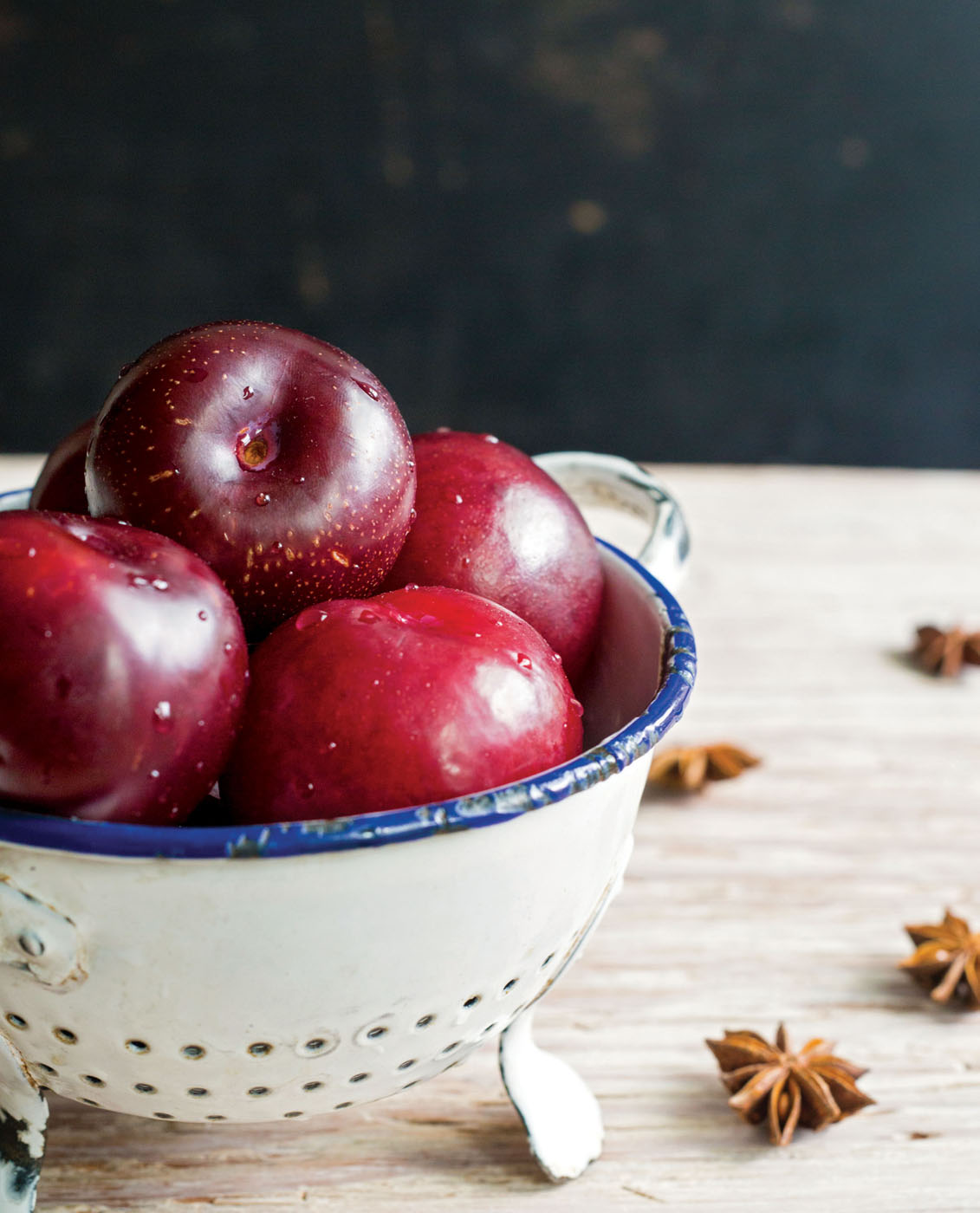
If made well, jam is a season in a jar—fruit remains intact and the sunshine of summer can express its purity. And amendments can be added to heighten, surprise, or leave a question mark on a palate, which will encourage knives and hands to return for seconds. This refrigerator jam pairs good plums with a natural match, port wine, and adds star anise as an accent, elevating the plums.
Yield: 681 grams (3 cups)
| INGREDIENTS | METRIC (GRAMS) | VOLUMETRIC (APPROXIMATE) |
| Plums, whole, fresh | 900 | 2 pounds |
| Star anise | 8 intact “stars” | 8 intact “stars” |
| Sugar | 360 | 1¾ cups |
| Port wine | 120 | ½ cup |
| Lemon juice, freshly squeezed | 14 | 1 tablespoon |
DAY ONE
PREPARE
Pit and quarter the plums.
Wrap the star anise in cheesecloth and tie it with a piece of kitchen string for easy retrieval.
FIRST BOIL
In a wide medium nonreactive pot, combine the plums, star anise, sugar, port wine, and lemon juice.
Bring to a full boil, stirring occasionally.
Remove from the heat, cover the pot, and let the mixture sit at room temperature for at least an hour, or as long as overnight.
DAY TWO
FINAL BOIL
Remove the pot lid. Set the jam mixture over medium-high heat, and bring it to a medium boil.
Cook, stirring occasionally, until the jam thickens.
The jam is ready when it reaches a temperature of 220°F and passes the plate test: Freeze a plate and drop some jam onto it; if the jam wrinkles when gently pushed after cooling, it is ready.
This jam will hold well, chilled, for up to 2 weeks.
NOTE: For larger batches and greater yield you may double all amounts and proceed with the method as written.
Checking Temperatures
A candy or probe thermometer is the most accurate way to test the set of a jam or jelly. During testing we found that the infrared thermometer did not accurately read the boiling jam. At sea level, full set should occur at or just below 220°F. As water leaves the boiling liquid, progress toward this temperature will slow.
Once the boil reaches 212°F to 215°F, keep a very close eye on it, as it can burn quickly. I personally do not mind a jam that is somewhat loose; so depending on how it looks, I will often turn it off right around 215°F.
As an alternative to the thermometer you may also use the plate test. Before beginning the final boil, place a ceramic or glass plate in the freezer. When the boiling mixture forms glassy bubbles the size of marbles and seems well thickened, place a teaspoon of jam on the plate and return it to the freezer for 2 minutes. While waiting for the mixture to set, lower the heat under the jam pot, or remove it from the burner. After the 2 minutes, remove the plate from the freezer and push gently on the jam, checking to see if it wrinkles. If it is set and wrinkles with pressure, the jam is ready. If it is not set, return the pot to the heat and cook the jam for 1 or 2 minutes longer, then repeat the test.